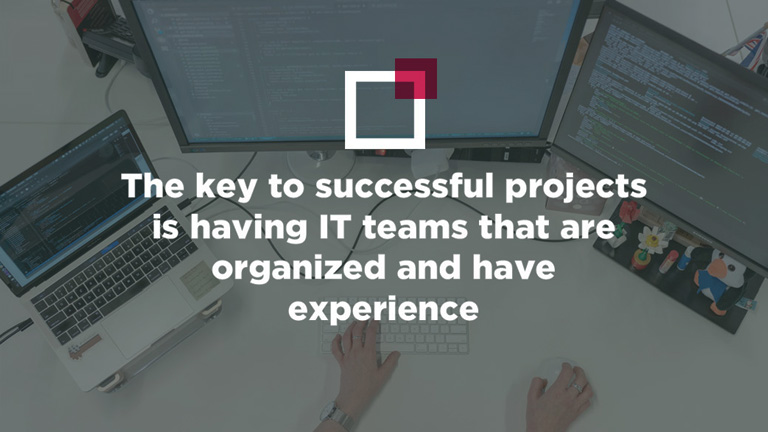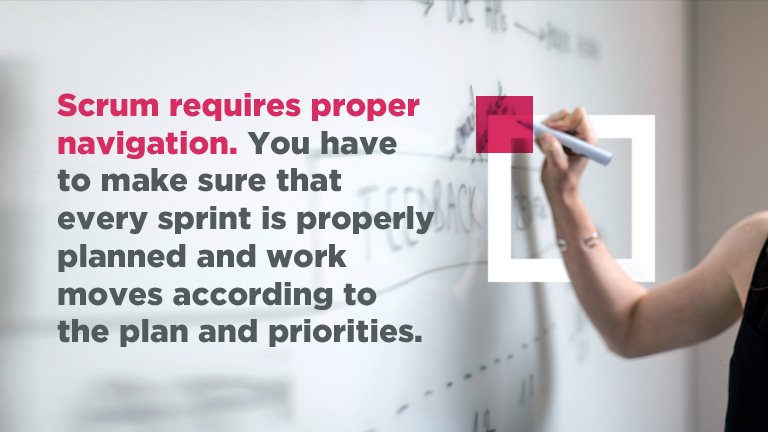Roles in a medical software outsourcing project – what does it look like?
In the world driven by software development, the process of software development has long been structured. Add that many guides have been written on this subject. However, if the IT environment is not your primary domain, some issues may remain unclear to you. For example: what is a development and partnership model like in the software outsourcing project? In this post we would like to share our perspective as a medical software development company. Moreover, tell you what it looks like in Graylight Imaging.
IT team roles in medical software outsourcing
In the basic development team that carries out an IT project , there is a certain number of roles which can be extended in a medical software development project if required, for instance:
- Team leader
- Machine Learning Engineer
- Deep Learning Engineer
- Medical Imaging Specialist
- Software Developer
- Software Architect
- Business Analyst
- DevOps Engineer
- Quality Assurance
- Business Analyst
- Solution Architect
Names can vary according to the preferences of individual suppliers or simply – market trends. And of course according to theory, there may be also Lead roles among the technical ones, eg. Lead Engineer or Lead QA.
In the medical field, making software secure and compliant is very important. There’s not room for mistakes. The key to successful projects is having IT teams that are organized and have experience.Roles and responsibilities in these teams might seem clear to most people. But it’s useful to take some time to understand them better. This is especially true if you’re thinking about making your product’s IT software. Either by getting help from others or within your own company. Especially if you haven’t done it before. Creating a good team that knows a lot about software development in all the important areas can make sure that projects go well. It also can help avoid any bad surprises along the way.

Best practices for managing outsourced medical software development teams
At the very beginning it is worth noting that all projects we conduct in Graylight Imaging are divided into iterations (called sprints). During sprints subsequent elements or milestones are delivered, established at the planning stage. This is a typical model of software delivery. The so-called Scrum (Agile), which is now a standard on the market. However, Scrum requires proper navigation. You have to make sure that every sprint is properly planned and work moves according to the plan and priorities. Such navigation is to be provided by the so-called Scrum Master. Without getting into the intricacies of this role, it’s well worth focusing on one reason – process management, framing and removing obstacles are aspects you certainly don’t want to miss in your project.

In our Scrum teams, the role of a Scrum master is usually simply performed by the team leader. Of course, the team leader also has other responsibilities such as taking care of deadlines, employee motivation, the employee appraisal system, and all the management activities also rest on his/her shoulders. When the Scrum master’s and team leader’s roles are separated, then the Scrum master remains in the role of a so-called team leader, his/her main task is to remove obstacles which the team may be facing, so that they can work as efficiently as possible – this is very important. The team must be able to focus on their task, the number of distractions and potential obstacles that can (and do) appear inside each organization must be limited.
What factors drives success in medical software development?
How can you be sure that the Scrum master navigates the project team well? How do you make sure that the priorities are well understood?
Here a very interesting role comes on stage, that is a “product owner” or a “proxy product owner”, “system analyst” or “business analyst” – the roles’ names may vary but they are interchangeable in some way, although it seems that the trend nowadays rather promotes the BA person. Still, this does not mean that the remaining terms cannot be encountered or that they all imply exactly the same thing.
Who is a system analyst? It is a person who knows the technical specifications, is firmly rooted in the technical reality and at this level is able to contribute and understand a lot. A business analyst does not focus so much on the technical side of the project, but rather on the functionality of the solution – there are components, e.g. those related to usability, which are obviously extremely important, but do not require such a strong entry into schematics or technological parameters.
Proxy product owner, in turn, is a role primarily resulting from the Scrum methodology – such a person in the development team is the link between the team and the Product Owner and makes sure that the vision of the latter is carried out at the level of software production and subsequent software components are delivered according to the priorities of the Product Owner. In practice we often use a solution where the proxy product owner is simply a BA.
To receive value on time
When it comes to a medical software outsourcing project, there is also the question of imposing such a network of responsibilities and competences on this framework which will ensure that the client receives value on time. In this case, a TL is usually responsible for maintaining the timeliness. It becomes his/her permanent obligation to attend planning meetings with the client. Moreover, take care of the priorities set, deadlines, milestones. It is the responsibility of the TL to organise his/her teamwork. In order to achieve these goals while minimising the involvement of people on the customer side. At a lower level of responsibility, the person who maintains regular contact with the client is a BA. It is him/her who takes care of effective communication. Moreover, gathers and resolves doubts that appear in the development team.
In practice, objectives and priorities are determined with the client and the outsourcing partner “get down to work” and it is up to the client to arrange the project work in such a way as to ensure its achievement. We live in a dynamic world and many priorities along the way will change and adapt to new business realities. The right communication enables a smooth and flexible response to them. In fact, this is the heart of Scrum – regular teleconferences or meetings guarantee that what the team is working on at the moment still remains valid, does not need to be modified. This allows the client to monitor progress with minimal involvement on his part.
Software success through Engineers, Testers, and Solution Architects
Of course, none of the software projects could have been successful if it hadn’t been for the engineers working in it. In Graylight Imaging we make sure that in our projects, apart from developers, there are also testers on permanent basis, although in other companies we have already encountered situations where QA were not involved in the software outsourcing project from start to finish. From our perspective, our model simply makes sense. Depending on the complexity of the project, the so-called Lead developer or Lead QA may function in the team. In practice, they are simply people with the highest competence in a given team, who support the Leader Team in planning and distributing tasks, and serve as an advisory role for other team members.
In more demanding projects there is also the role of a “solution architect” – an engineer responsible for the technical solution of business problems. Such a person looks for the best, most appropriate technological solutions that would help to address the needs. A good design of a solution not only allows to achieve the desired business value later on, but can also have a decisive impact on the budget and delivery of the solution on time.
Considering a medical software outsourcing project?
At GLI, have been actively involved in medical software outsourcing projects for almost ten years. We recognize that this field has many different aspects, and we’re inviting you to connect with us. Whether you want to share your own experience or need answers to questions you haven’t found elsewhere, we’re here to help. Our main goal is clear. We would like to guide you and provide you with the knowledge you need. In order to approach software development with confidence. So that we can ensure the delivery of top-quality medical software products. Don’t hesitate to get in touch with us!
Contact us if you have any questions!
See the previous post by Marek: Medical project estimation – what is worth remembering?